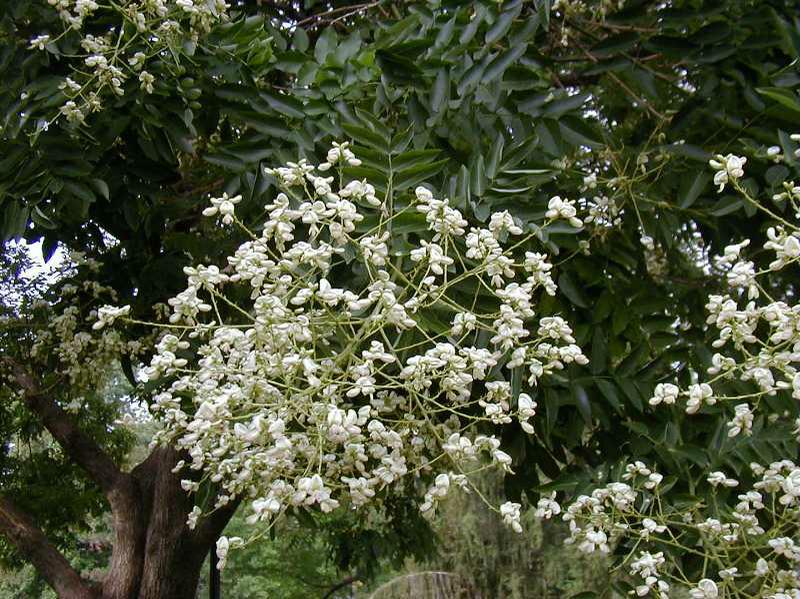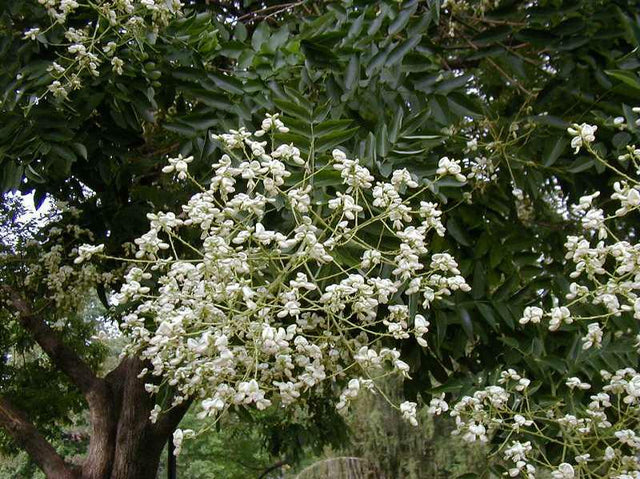Japanese Pagoda Tree or Chinese scholar tree, is native to China and Korea, but not Japan. It is a medium to large deciduous tree that typically matures to 50-75’ tall with a broad rounded crown. It is generally cultivated for its attractive compound foliage and fragrant late summer flowers. Pinnate leaves, each with 7-17 oval, lustrous, dark green leaflets, remain attractive throughout the growing season. Leaves retain green color late into fall, resulting in no fall color or at best an undistinguished greenish yellow. Small, fragrant, pea-like, creamy white flowers bloom in late summer in sweeping terminal panicles to 12” long and to 12” wide. Flowers fall to the ground around the tree after bloom covering the ground with a blanket of white. Flowers give way to slender, 1- to 6-seeded, knobby, bean-like pods that mature to brown in fall and persist into winter. Although not native to Japan, the specific epithet and common name seem to recognize the early use of the tree in Japan around Buddhist temples.
Details
Botanical Name
Styphnolobium japonicum
Common Name
Japanese Pagoda Tree
Hardiness Zone
- 4
Appearance
Max Height
75 feet
Max Spread
75 feet
Plant Form
Foliage Colour
- Green
Fall Colour
Flower Colour
- White
Edible
Edible Component
Edible Harvest Period
Edible Use
Fruit Colour
Growing
Flowering Period
Late Summer
Moisture
Average
Sunlight
Full Sun to Partial Shade
Maintenance
Low
Deer Resistance
Get more information about this plant and others with our comprehensive plant finder tool.




